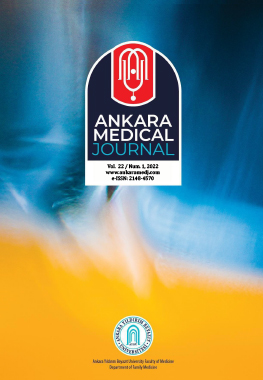Differences between office and ambulatory blood pressure measurements in patients using triple antihypertensive treatment
Tahir İsmailoğlu1, Umit Aydogan1, Cem Barcin21Gülhane Training and Research Hospital, Department of Family Medicine, Ankara, Turkey.2Gülhane Training and Research Hospital, Department of Cardiology, Ankara, Turkey.
INTRODUCTION: It has been suggested that blood pressure (BP) measurements in the office/clinic may fall short of detecting phenomena such as a white coat or masked hypertension (HT). In this cross-sectional study, we aimed to evaluate the differences in office and ambulatory BP measurements (ABPM) and investigate the secondary causes in patients using triple antihypertensive medication.
METHODS: Of the included 57 patients using triple antihypertensives, 28 had high office BP measurements (HOM-HT group), whereas 29 had normal office BP values (NOM-HT group). Both groups underwent an ABPM. Also, serum biochemistry, 24-hour urine tests, Epworth Sleepiness Scale, and renal artery Doppler assessments were performed to detect secondary causes of HT. Groups were compared regarding ABPM values, tests, scale results, and secondary causes.
RESULTS: No significant differences were found between the demographics and serum tests. According to the ABPM, white coat HT was detected in 15 patients (53.67%) in the HOM-HT group, whereas five (17.24%) in the NOM-HT group had masked HT (p=0.018). In three patients, secondary causes were detected (hyperaldosteronism, renal artery compression, and sleep apnea), all of whom were in the HOM-HT group. The groups did not differ significantly regarding the frequency of secondary causes (p=0.112). In contrast to when the ABPM is taken into account (16.66% vs. 0% p=0.028).
DISCUSSION AND CONCLUSION: Data of the present study showed that ABPM is necessary to detect white coat and masked HT. Also, depending on ABPM rather than office/clinic measurements may save time and expenses when investigating secondary causes.
Manuscript Language: English
(645 downloaded)





